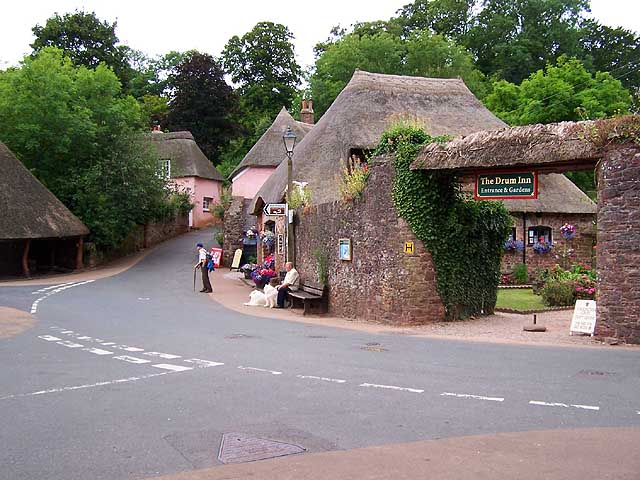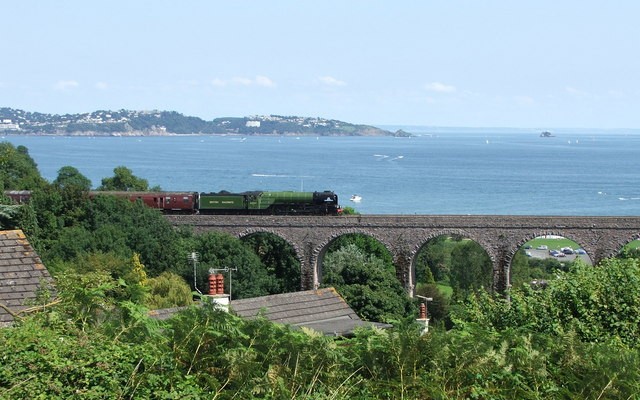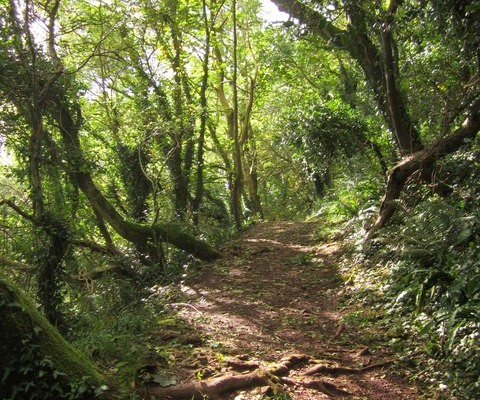Interesting information
In 2005 the South Devon Group of the Ramblers’ Association were left a legacy by one of their members, John Musgrave, on his death. The legacy was used to create a lasting reminder of John, and his passion for walking, by the establishment of a long-distance walk skirting the inland side of Torbay. The route, which stretches from Maidencombe in the north to Brixham in the south, was created by the South Devon Ramblers in partnership with a variety of local bodies – the Torbay Coast and Countryside Trust, Torbay Council, Devon County Council, South Hams District Council and Teignbridge District Council. The result is the John Musgrove Heritage Trail, a 35 mile trail which explores much of what makes up the area’s unique and varied landscape – coastline, rolling hills, combes, estuary and villages.
The walk is described as starting and finishing at Cockington. However, it is also possible to use Torquay’s railway station as the start and finish point, and this alternative is also indicated.
Originally, the centre of Cockington village had been some way distant, next to the church and Cockington Court, both of which will be passed near the end of the walk. However, in the early years of the 1800s the Lord of the Manor, Roger Mallock, decided he wanted a view from the Court uncluttered by buildings. He therefore had the barns and the cottages knocked down and a new village rebuilt out of sight, but in “picturesque” style. The result is today’s Cockington. Most of the buildings therefore date to around 1800-1810, although several of the farm buildings are considerably older, pre-dating the building of the new village. The parkland in front of the Court now makes an attractive open area.
Kingskerswell is an old village, but those travelling along the Torquay-Newton Abbot Road are generally unaware of its attractions. The old part of the village was on the original road between Newton Abbot and Torre Abbey until bypassed by the 19th century turnpike road.
The railway bridge was designed by Isambard Kingdom Brunel, and opened in 1848 for the South Devon Railway.
Kingskerswell Church is in an attractive setting. Originating in the 1300s, much was added in the 1400s, including the tower. There was much restoration in the 1870s.
Pitt House is an old building. Originally a farmhouse, it dates from the early 16th century.
The largely wooded area of Kerswell Downs has evidence of prehistoric field systems on the Downs.
The mostly well-surfaced Church Way makes a delightful means to pass through this attractive and surprisingly quiet countryside.
Although there is the faint sound of distant traffic on the Torbay Ring Road, the character and “feel” of the landscape here, all steep hills and deep valleys, is that of an unexpectedly remote area.
Edginswell was once a relatively remote rural village. Despite its proximity to modern development, it is surprisingly unchanged in appearance from earlier days, centred as it is around old farm buildings.
The walk passes the Cockington Estate. All the land on the Estate is the property of the Torbay Coast and Countryside Trust, and maintained by the Trust for the benefit of the landscape and wildlife and for public access.
The vistas over the unspoiled valley to Torquay and the headland beyond are superb. Now and again the tower of Cockington Church may be glimpsed in the foreground.
Cockington Court was the home of the Cary family from the 14th century until the 17th century and then the Mallock family. The current house dates largely from the 16th and 17th centuries and has had its current appearance since its rebuilding by the Mallocks in 1820. It was purchased by Torquay Corporation in 1935 and is now the property of the Torbay Coast and Countryside Trust, who use it as their headquarters.


